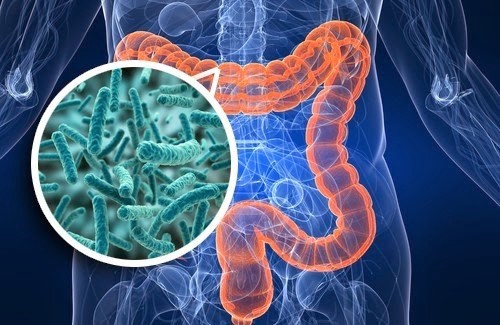Highlights
- •Plasma membrane ruffles are a mechanical immune signal caused by bacterial invasion
- •The mechanosensor PIEZO1 detects infection-induced ruffles and mediates Ca2+ influx
- •PIEZO1 activation triggers secretion of the proinflammatory danger signal ATP
- •PIEZO1 activation triggers protective gene expression programs
Summary
Microorganisms are generally sensed by receptors recognizing microbial molecules, which evoke changes in cellular activities and gene expression. Bacterial pathogens induce secretion of the danger signal ATP as an early alert response of intestinal epithelial cells, initiating overt inflammation. However, what triggers ATP secretion during infection is unclear. Here we show that the inherently mechanosensitive plasma membrane channel PIEZO1 acts as a sensor for bacterial entry. PIEZO1 is mechanically activated by invasion-induced membrane ruffles upstream of Ca2+ influx and ATP secretion. Mimicking mechanical stimuli of pathogen uptake with sterile beads equally elicits ATP secretion. Chemical or genetic PIEZO1 inactivation inhibits mechanically induced ATP secretion. Moreover, chemical or mechanical PIEZO1 activation evokes gene expression in immune and barrier pathways. Thus, mechanosensation of invasion-induced plasma membrane distortion initiates immune signaling upon infection, independently of detection of microbial molecules. Hence, PIEZO1-dependent detection of infection is driven by physical signals instead of chemical ligands.
Introduction
Detection of microbes is the first step of the immune response to infection and is crucial to ensure the health and survival of an organism. Only tight regulation of immune recognition pathways allows to establish a protective response against pathogens, while tolerating the microbiota and avoiding deleterious autoimmune and autoinflammatory diseases (Bartok and Hartmann, 2020; Fitzgerald and Kagan, 2020; Wolf and Underhill, 2018).
Incoming microorganisms are generally sensed by an array of pattern recognition receptors (PRRs), which identify categories of microbes. The mechanistic basis of PRR-mediated immune sensing is of chemical nature, as PRRs are activated by the binding of specific ligands: the pathogen-associated molecular patterns (PAMPs). PAMPs are molecules that are characteristic of microorganisms, but are not produced by host cells. Therefore, the detection of PAMPs signals the presence of microbes. For example, TLR4 binds lipopolysaccharide (LPS), a component of the outer membrane in Gram-negative bacteria, which is absent in Gram-positive bacteria, viruses, archaea, parasites and other eukaryotes. PRR activation initiates inflammatory signaling pathways, which culminate in changes in cellular activities and gene expression programs that ultimately confer immune protection (Bartok and Hartmann, 2020; Fitzgerald and Kagan, 2020; Wolf and Underhill, 2018).
Similarly, during sterile inflammation (i.e., inflammation in the absence of infection) immune signaling starts through detection of specific ligands: the danger-associated molecular patterns (DAMPs). However, rather than being foreign like PAMPs, DAMPs are endogenous yet localized to a compartment from which they are absent under homeostatic conditions. An example is ATP, which is sequestered inside the cytosol of resting cells at high concentration but is short lived and virtually absent in the extracellular space. Hence, the passive or regulated release of ATP is perceived as a signal of damage or stress through activation of broadly expressed cell surface nucleotide receptors. Although DAMPs are the main drivers of inflammation, for instance, in tissue damage, autoimmunity, allergies, or chronic inflammatory disorders, their role during infection is less clear (Giuliani et al., 2019; Idzko et al., 2014).
The gut is characterized by the presence of a very large number of microorganisms, which reside mostly in the gut lumen and are harmless. Intestinal epithelial cells (IECs) form a physical barrier between gut microbes and the underlying mucosal tissue. However, pathogens can overcome homeostatic anti-microbial defenses and reach the epithelium. As a consequence, IECs function as important immune sentinels detecting barrier breaches and alerting the immune system (Allaire et al., 2018; Peterson and Artis, 2014; Sansonetti, 2004).
IECs are the target of many gut pathogens, of which some force their epithelial uptake by means of virulence factors. Several Gram-negative intestinal bacteria, including Shigella flexneri and Salmonella Typhimurium, use a type 3 secretion system (T3SS) to enter into IECs, while enteropathogenic Escherichia coli (EPEC) uses the T3SS to intimately adhere to pedestals induced on the IEC surface (Puhar and Sansonetti, 2014b). In contrast, the Gram-positive enteropathogen Listeria monocytogenes uses internalins to invade IECs (
Cossart and Sansonetti, 2004). Although the virulence proteins orchestrating invasion and the underlying molecular mechanisms are distinct, the engulfment of all these pathogens involves actin cytoskeleton rearrangements. The assembling actin filaments push against the plasma membrane, leading to the formation of plasma membrane ruffles, which are highly dynamic and strongly bending membrane extensions that eventually enclose bacteria (Cossart and Sansonetti, 2004; Puhar and Sansonetti, 2014b).
We discovered that in IECs the Gram-negative pathogens Shigella flexneri, Salmonella Typhimurium, and EPEC trigger rapid connexin hemichannel-dependent secretion of the danger signal ATP as an early alert response to infection. Using in vivo models of shigellosis, we found that ATP secretion is upstream of the production of proinflammatory mediators such as cytokines, chemokines, and anti-microbial peptides and initiates the accelerated onset of acute inflammation in the gut. Chemically blocking ATP secretion or extracellular ATP (eATP)-dependent signaling dampens the production of inflammatory mediators and destruction of the mucosa. Likewise, S. flexneri has evolved to escape this inflammatory response by injecting the T3SS effector IpgD into IECs, which terminates connexin hemichannel-dependent ATP secretion (Puhar et al., 2013). Therefore, ATP secretion during infection is a strong driver of intestinal inflammation. However, what initiates ATP secretion during infection is unclear.
Here we show that the formation of plasma membrane ruffles accompanying the invasion of Gram-negative or Gram-positive bacteria is a physical immune signal of infection, which is detected by the mechanosensor PIEZO1. PIEZO1 activation is necessary and sufficient to trigger mechanically induced ATP secretion via Ca2+ influx and also reprograms inflammatory gene expression in IECs. Given that formation of plasma membrane ruffles is a characteristic and unifying feature of invasive bacteria, our results indicate that unlike PRRs, which are driven by ligand binding, PIEZO1 is a mechanically driven sensor capable of detecting physical aspects of invasive infection….







